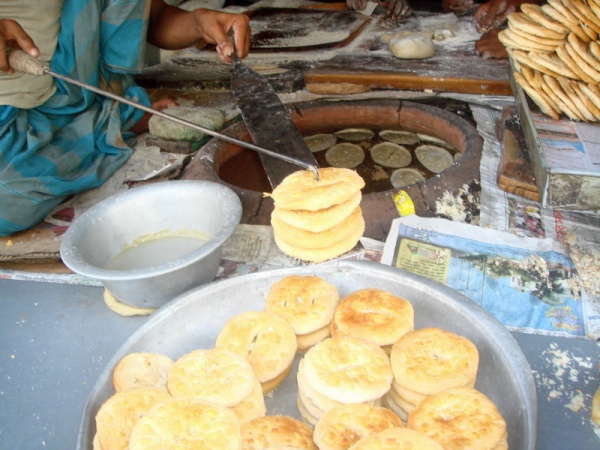Facts About Bakarkhani
Bakarkhani, also known as baqarkhani or bakar khani roti, is a delectably thick and spiced flatbread originating from Bangladesh, with roots tracing back to the Mughal era. If you ever find yourself in Old Dhaka, you'll discover it's a cherished breakfast delight. However, this savory bread has traveled across the Indian subcontinent, with each region imparting its own distinct twist.
What truly sets bakarkhani apart is its biscuit-like texture with a crispy crust. It is crafted from a blend of flour, semolina, sugar, molasses, saffron, poppy or nigella seeds, salt, and ghee. This combination of ingredients bestows upon it a rich, unique flavor profile.
The history of bakarkhani is quite captivating. It originated in Sylhet, where Afghan migrants settled during the Baro-Bhuiyan period. The bread’s name pays homage to Agha Baker Khan, a general serving under Nawab Siraj ud-Daulah. According to legend, Khan was inspired by a tragic love story involving a woman named Khani Begum. Over time, bakarkhani's popularity spread in Dhaka and beyond, facilitated by trade and travel.
Crafting bakarkhani is somewhat of an art form. You begin by kneading together flour, ghee, cardamom, sugar, salt, and water. The dough is then flattened and baked on a tandoor or griddle. Before baking, the dough is layered with ghee, molasses, saffron water, and seeds, enhancing its rich flavor and texture.
There are several variations of bakarkhani, such as shukha naan and the Kashmiri version. The Kashmiri bakarkhani is thinner, crispier, and layered, often sprinkled with sesame seeds. It is a popular breakfast item in Kashmir, typically enjoyed with noon chai, a type of salted tea.

 Myanmar (Burma)
Myanmar (Burma)